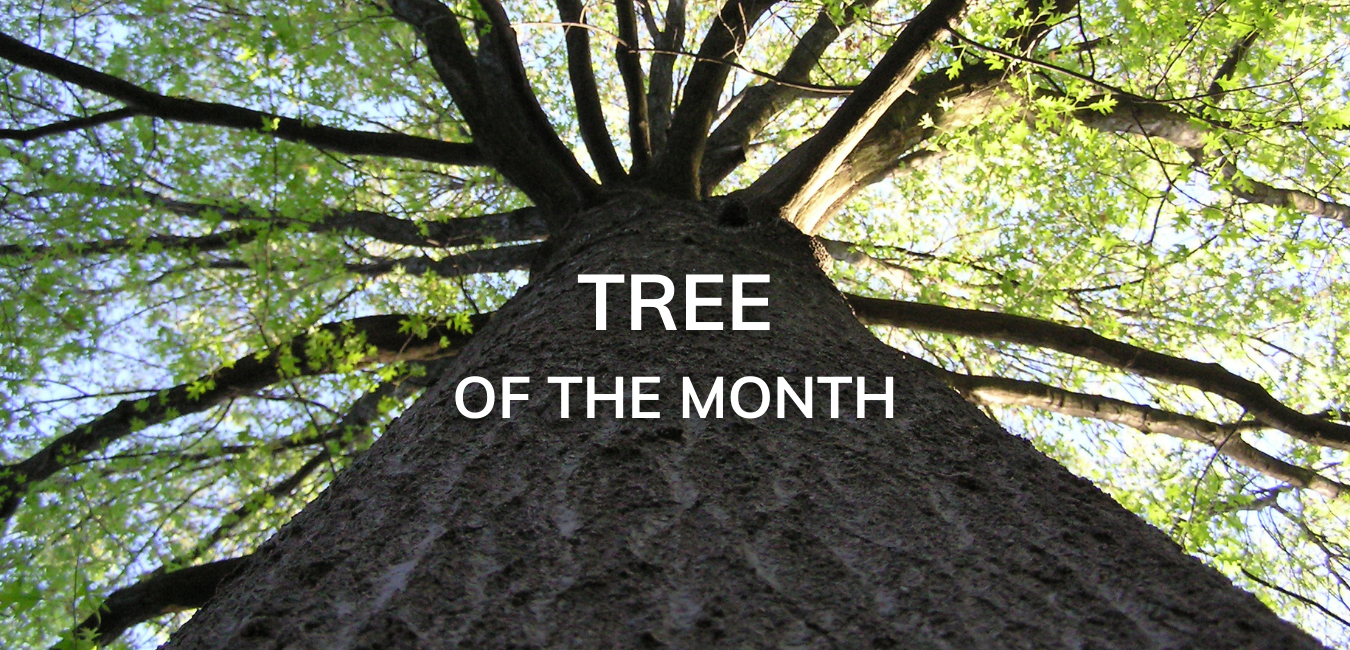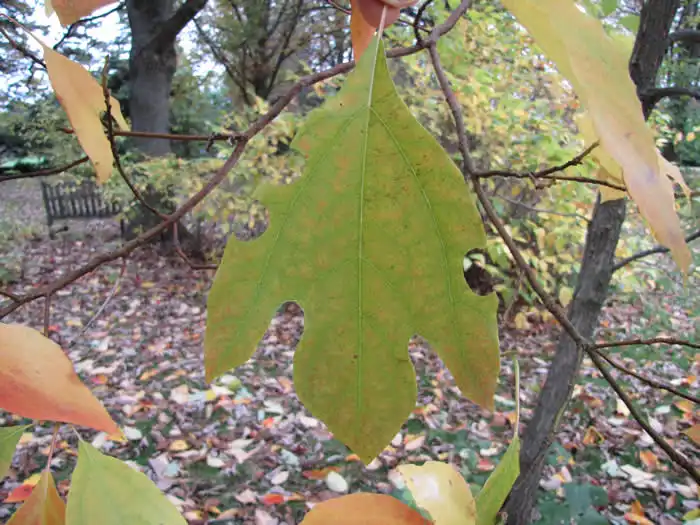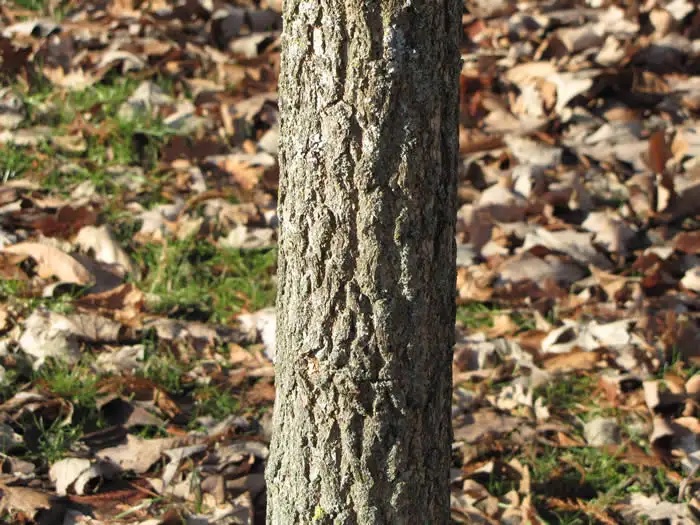Sassafras is a distinct, but relatively uncommon, deciduous tree that is found in the Carolinian forests of southwestern Ontario. It is typically not found north of Toronto. This species does well in gaps in the canopy and is often found in small colonies due to the production of root suckers. Sassafras can grow up to 20 meters tall and 50 cm in diameter, and can be found in variable moisture conditions, although it prefers moist and well-drained soil. As well, it is adaptable to various soil types, and can establish in shade or full sun conditions.
Sassafras is an easily identifiable species due to its unique leaf shape that is often said to look like a mitten. The leaves are simple and alternate and can have multiple variations, including a left and right “mitten”, a three lobed leaf, or an oval leaf. In the spring, the tree produces small yellow flowers and dark blue berries that are enjoyed by various bird species. Sassafras leaves turn various shades of bright yellow, red, and even purple in autumn. Its young stems are light green and, as it matures, the bark becomes orange/brown and develops deep furrows with softer flat ridges. A tip for identifying this tree in the winter is to look for irregular or tiered shape branches to the tree, giving it a unique silhouette. This species also can be identified by its distinct spicy odour when the leaves or young branches and stems are bruised.
Fun Fact: The roots of Sassafras tree used to be the most common ingredient used in root beer! As well, extractions from the roots and bark have been used to make other products such as spices, teas, soaps, and perfumes.
References
https://www.ontario.ca/page/sassafras
http://nanps.org/native_plants_know/sassafras-albidum-sassafras-2-1/
Images Source: Chris Earley, University of Guelph, https://www.uoguelph.ca/arboretum/thingstosee/trees/sassafras




